Chinese New Year, or the Spring Festival, is a festival that celebrates the beginning of a new year according to the traditional Chinese lunisolar calendar. Regarded as one of the most precious holidays in Chinese culture, this festival was included in the UNESCO Representative List of the Intangible Cultural Heritage of Humanity in 2024. Chinese New Year symbolizes the end of winter and the arrival of spring. The festival starts on Chinese New Year's Eve (the evening before the first day of the year) and continues until the Lantern Festival on the 15th day of the new year. This special period begins with the new moon, which appears between January 21 and February 20.
Chinese New Year is associated with many myths and traditions. Originally, the festival was celebrated to honor deities and ancestors. In China, various regions have their own distinct customs and traditions related to New Year celebrations. On the evening before New Year's Day, Chinese families come together for a traditional reunion dinner. Families thoroughly clean their homes and symbolically sweep to drive out bad luck. Doors and windows are often decorated with red paper cutouts and couplets, symbolizing luck, prosperity, and longevity. The celebrations also include traditional activities such as setting off fireworks and giving money in red envelopes.
Chinese New Year is celebrated as an official holiday particularly in Southeast Asian countries such as Singapore, Brunei, Cambodia, Indonesia, Malaysia, Myanmar, the Philippines, and Thailand, where there are significant overseas Chinese communities. Additionally, Chinese New Year has become an important cultural event in countries such as Australia, Canada, France, New Zealand, Peru, South Africa, the United Kingdom, and the United States. Moreover, Chinese New Year has influenced other lunisolar New Year celebrations, such as Losar in Tibet, Tết in Vietnam, Seollal in Korea, Shōgatsu in Japan, and the Ryukyu New Year, playing a key role in the spread of these traditions.
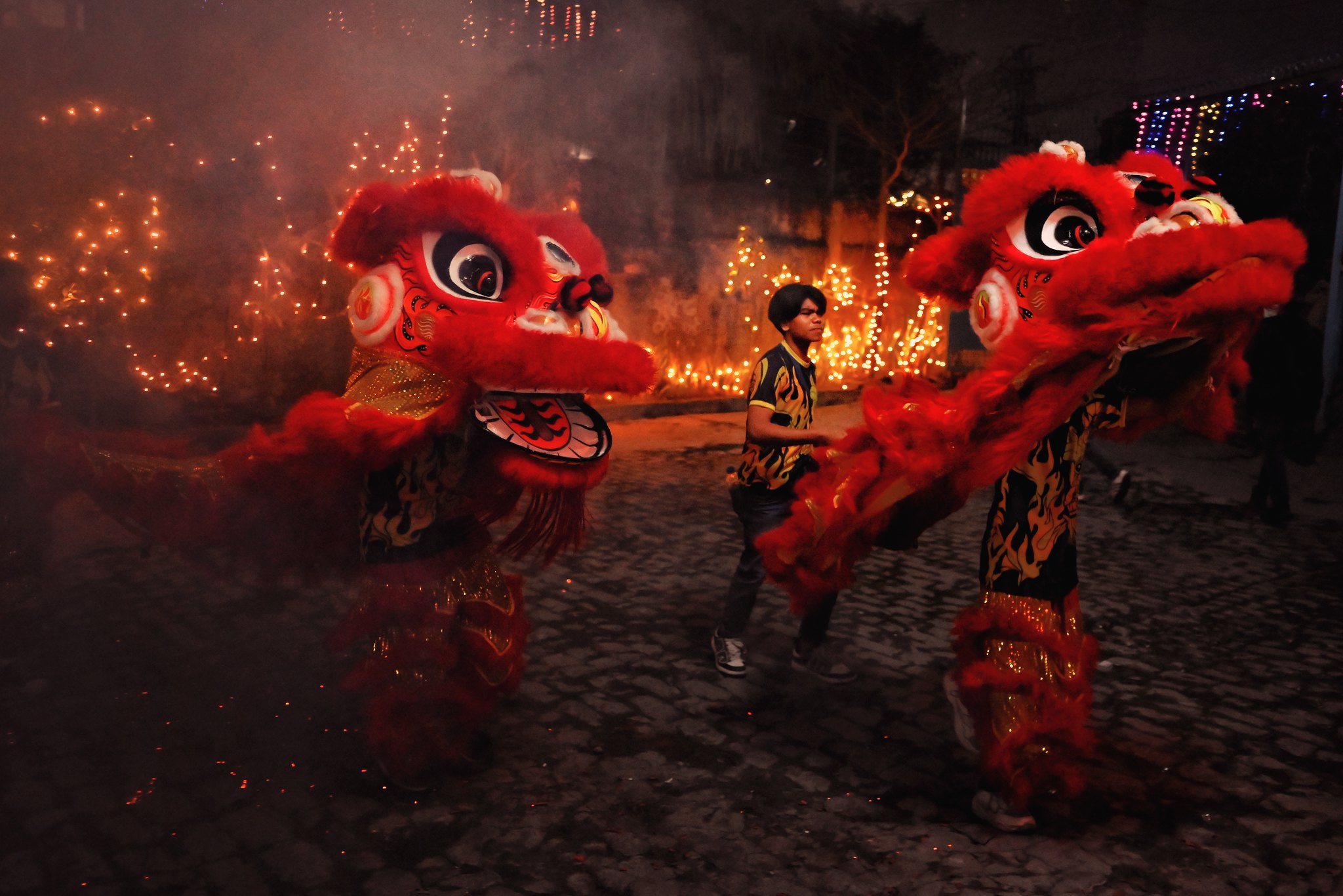
2025 Chinese New Year Festival (Photo: Pritam Sarkar, flickr.com)
Dates in the Chinese Lunisolar Calendar
The Chinese calendar is based on the movements of both the moon and the sun. In this calendar, Chinese New Year falls on a date between January 21 and February 20 each year. This date changes annually because Chinese New Year, calculated by the lunar calendar, does not have a fixed date according to the Western calendar. The New Year celebration lasts for 15 days and occurs on different dates each year. Therefore, to know when Chinese New Year is, one must refer to the Chinese lunar calendar. In the lunar calendar, each year is represented by an animal, and these animals repeat every 12 years. The 12 animals, in order, are: the rat, the ox, the tiger, the rabbit, the dragon, the snake, the horse, the goat, the monkey, the rooster, the dog, and the pig.【1】
History
The origins of Chinese New Year date back thousands of years to ancient China. Traditionally, the beginning of Chinese New Year is associated with rituals performed to protect people from a malevolent creature called "Nian." Nian would emerge to harm homes and frighten people, but the people managed to drive it away using the color red, noise, and fire. Over time, these rituals evolved into New Year celebrations, taking on the form they have today.
The earliest celebrations are linked to autumn harvest thanksgiving ceremonies. During the Western Zhou period (1045 BC – 771 BC), according to a poem found in the Classic of Poetry, the Chinese people celebrated the end of the year by clearing away millet piles and offering wine to guests. These celebrations are considered one of the early prototypes of Chinese New Year.
The earliest written records of Chinese New Year date back to the Warring States period (475 BC – 221 BC). In the encyclopedic Chinese classic Lüshi Chunqiu, written in 239 BC, there is mention of a disease-banishing ritual called "Great Nuo" performed on the last day of the year in the Qin state. With the unification of Qin, this ritual spread over a wider area and evolved into the tradition of cleaning homes.
During the Han Dynasty (202 BC – AD 220), the official form of Chinese New Year celebrations was recorded. In the work Simin Yueling written by the Han agronomist Cui Shi, it is noted that on the first day of the lunar month—known as Zheng Ri—people worshipped their ancestors and held family celebrations. This tradition has continued to this day. Additionally, during this period, people visited each other’s homes to wish one another a happy new year.
During the Jin Dynasty (266–420), New Year's Eve celebrations that lasted throughout the night began. These celebrations were described as "Shousui" in the work Fengtu Ji and established the tradition of spending the entire night together at the end of the year. During the Northern and Southern Dynasties, the practice of burning bamboo early in the morning became widespread as a means to drive away evil spirits.
In the Tang Dynasty (618–907), the tradition of sending Bai Nian Tie (New Year Greeting Cards) began. The celebrations, inscribed on gold leaf by Emperor Taizong, became popular among the people, and over time, Xuan paper began to be used. Moreover, during this period, the tradition of exploding bamboo evolved into fireworks with the invention of gunpowder, which, like bamboo explosions, served to ward off evil spirits.
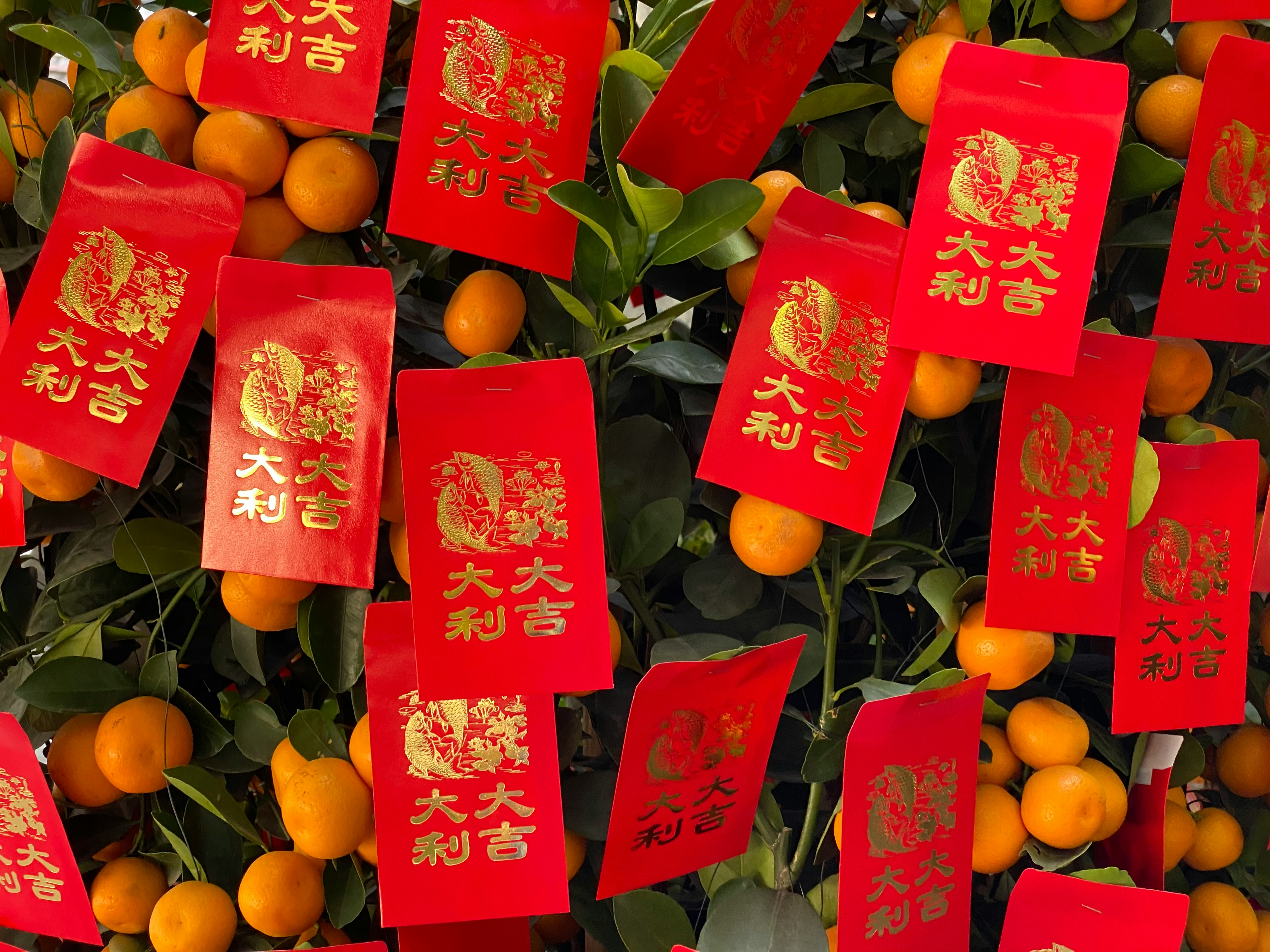
Papers with Couplets Consisting of Two Lines. They Usually Have Chinese Proverbs and Good Wishes Written on Them. (Photo: Yuwei Shaw, unsplash.com)
During the Song Dynasty, it became customary in New Year celebrations to give children "age-appropriate money." Additionally, foods consumed on New Year’s Day—such as jiaozi (dumplings) and nian gao (New Year cake)—were considered symbols of wealth and luck. These celebrations continued into the Yuan and Ming Dynasties, during which people exchanged such traditional foods as gifts among relatives.
During the Qing Dynasty, the practice of giving "Ya Sui Qian" (New Year Money) became widespread. Additionally, during this period, children were given money tied with red strings. These traditions continue in Chinese New Year celebrations to this day.
In the 20th century, although the Kuomintang government decided in 1928 to celebrate Chinese New Year on January 1, this decision was met with strong opposition among the people and was not implemented. In 1967, during the Cultural Revolution in China, Chinese New Year celebrations were banned; however, traditional celebrations were reinstated in 1980.
Festivities
Chinese New Year is celebrated as a grand festival lasting 15 days. During this period, families gather together, organize various traditional activities, and host performances such as folk dances and fiery fireworks displays. One of the most notable traditional events is the Lion Dance and Dragon Dance, which symbolize the hope for a bountiful and prosperous new year. Additionally, during this period, large street parades are held, money is given in red envelopes, and traditional foods are prepared.
Chinese New Year’s Eve
Chinese New Year’s Eve, the night before Chinese New Year, is marked by grand celebrations and traditional rituals. This night is one of the most important dinner gatherings for Chinese families and is typically celebrated with a feast that includes special meat dishes and offerings prepared for the New Year. Some families light the first incense of the year and visit local temples before midnight to pray for success and happiness. As in the past, fireworks are also set off to drive away evil spirits.
First Day
On the first day of Chinese New Year, it is traditional for family members to visit and show respect to their elders. Cash is given to children and younger family members in red envelopes known as Lai See (also called angpow or hongbao). This is a gift-giving ritual performed with wishes for wealth and health. Additionally, married family members exchange oranges or tangerines as a way to wish each other a happy new year. It is preferred that the money in the Lai See ends with the number 8, since this number sounds similar to the word "fa" (wealth), while the number 4 is considered unlucky because it sounds like the word for death.
Second Day
The second day, known as kāinián (the beginning of the year), is traditionally a day when married daughters visit their families. Additionally, it is common on this day to offer sacrifices to and pray to the God of Wealth.
Third Day
The third day is known as Chìkǒu (Red Mouth) or Chigou Day. This day is considered inauspicious for receiving guests. Instead, the household burns paper offerings to drive away evil spirits.
Fourth Day
The fourth day marks the introduction of institutional "Spring Festival dinners" into Chinese New Year celebrations. In the business world, this day also signifies the resumption of work and the return to normal business operations.
Fifth Day
The fifth day is regarded as the birthday of the God of Wealth. In northern China, people traditionally eat jiaozi (dumplings) on this day. It is also the day dedicated to worshipping Guan Yu. This tradition, particularly aimed at invoking Guan Yu’s divine protection and ensuring wealth, often includes setting off fireworks.

Jiaozi Dish (Photo: Kanesue, flickr.com)
Sixth Day
The sixth day, known as Horse Day, is considered a day to drive away the ghost of poverty. On this day, people bid farewell to the old and begin the new year in a more prosperous manner.
Seventh Day
The seventh day is known as Renri (the birthday of ordinary people). On this day, everyone is considered to have grown one year older. In some Southeast Asian communities, a raw fish salad called yusheng is eaten, symbolizing wealth and prosperity. For Buddhists, this is a day when meat is to be avoided, as it commemorates the birth of Shakra.
Eighth Day
The eighth day is the eve of the birth of the Jade Emperor, the ruler of Heaven. This day is typically marked by a family meal, and employers often arrange lunch or dinner to thank their employees.
Ninth and Tenth Days
The ninth day is celebrated as the birthday of the Jade Emperor of Heaven, and many people offer prayers and express their gratitude to God. The tenth day is also considered the birthday of the Jade Emperor and is generally celebrated with prayer and thanksgiving rituals.
Fifteenth Day: Lantern Festival
The fifteenth day of Chinese New Year is known as the Lantern Festival. On this day, people eat tangyuan (rice dumplings) and carry lanterns in processions through the streets. The Lantern Festival marks the end of the Chinese New Year celebrations. This day is also associated with romantic festivities; particularly, singles write their contact information on mandarin orange or tangerine peels and release them into a river, after which others collect these peels. This act is considered an indicator of potential romantic prospects.
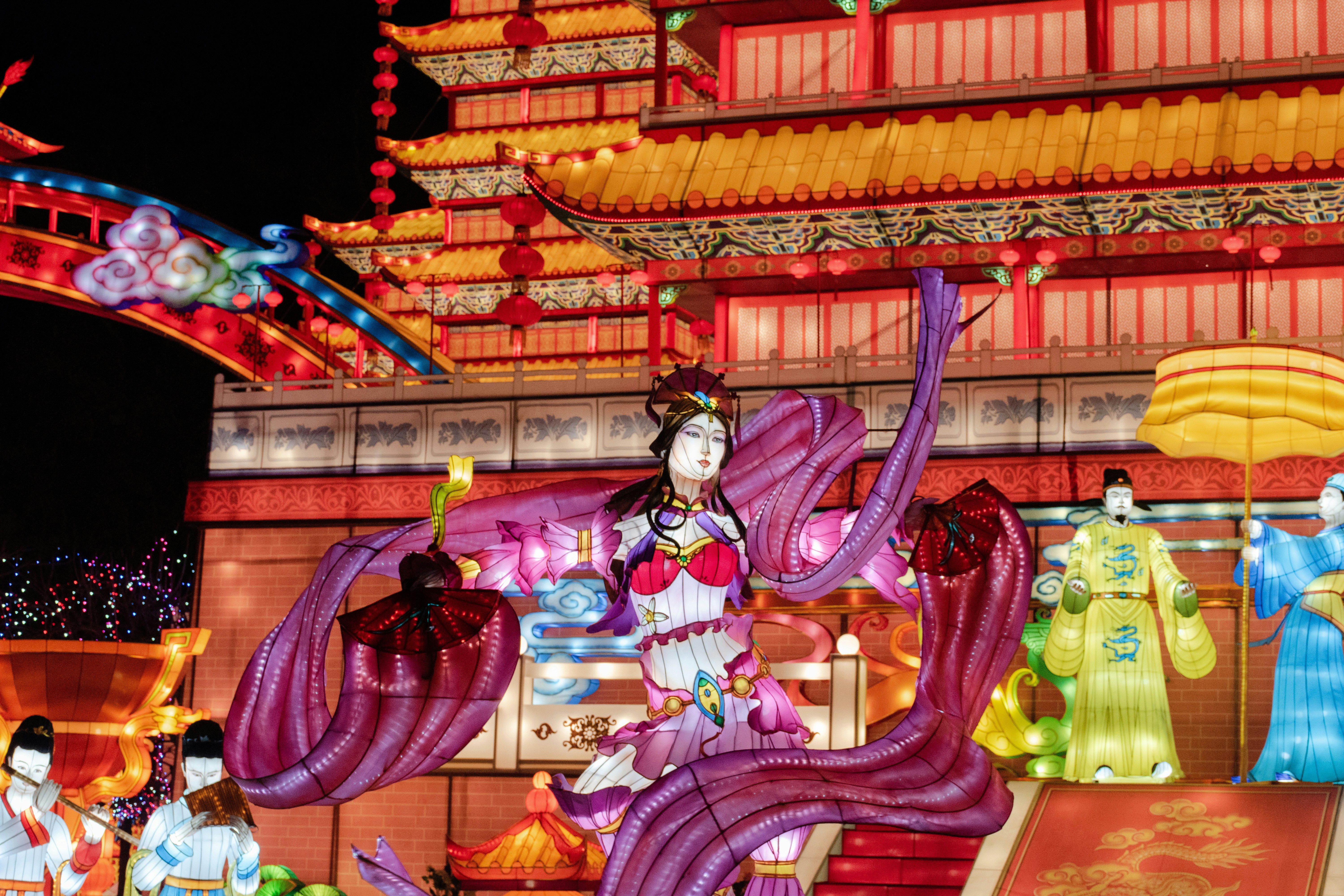
2018 Lantern Festival (Photo: Thomas Despreyroux, unsplash.com)
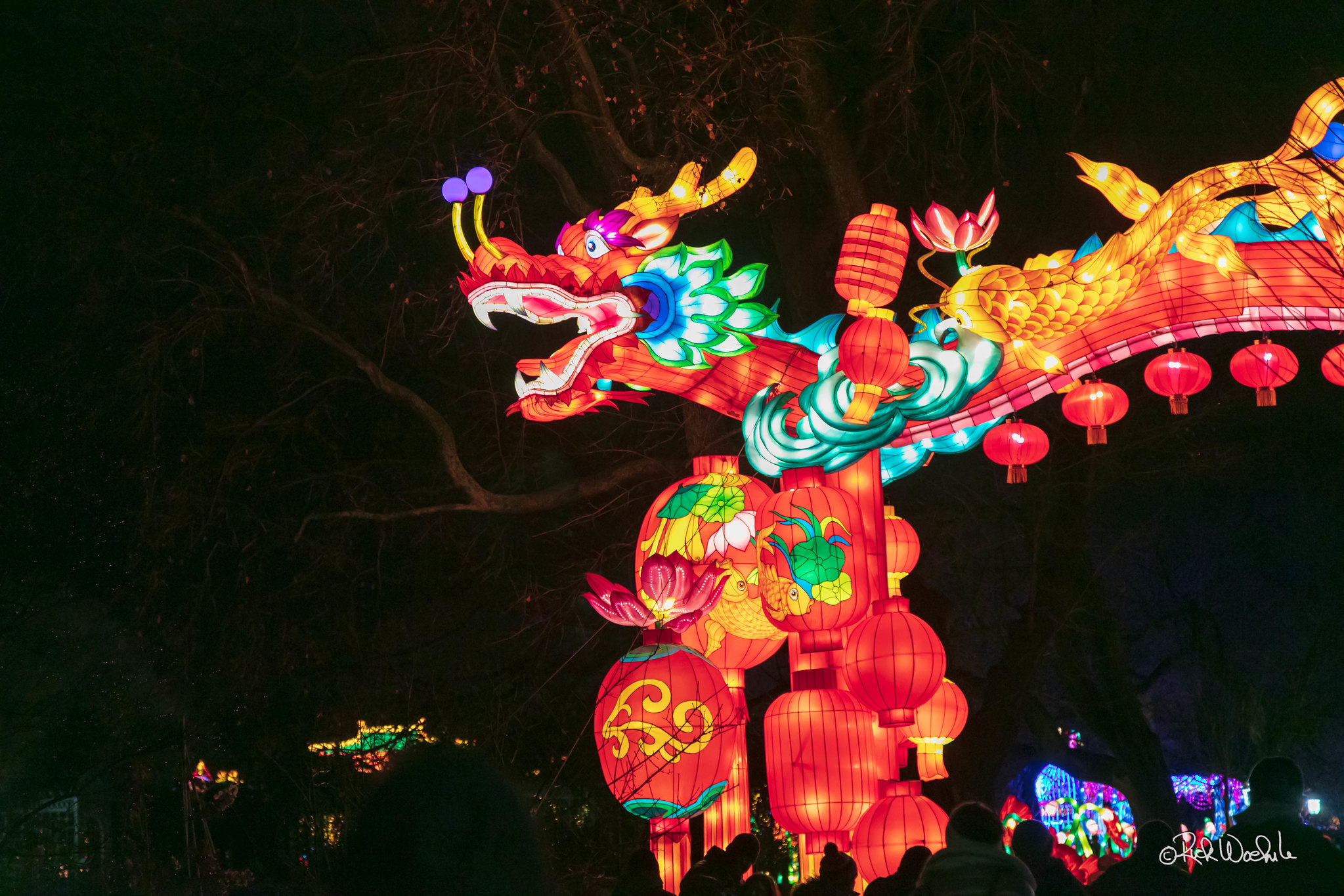
2019 Lantern Festival (Photo: Rick Woehrle Photography, flickr.com)
Festivities in Asian Countries
Chinese New Year is celebrated with great enthusiasm not only in China but also in various Asian countries. These celebrations are shaped by each country’s cultural and religious beliefs while fundamentally reflecting China’s traditional elements.
Korea
In Korea, Chinese New Year is known as Seollal, and Koreans gather with their families to show respect to their ancestors. During Seollal, traditional foods are eaten and various games are played. The Seollal celebrations in Korea serve to strengthen family bonds and reinforce respect for the past.
Japan
In Japan, Chinese New Year is celebrated with certain traditions found in the Japanese zodiac. However, since the Japanese celebrate the New Year according to the Western calendar, the celebrations in Japan differ somewhat from those in China. In Japan, Chinese New Year is traditionally referred to as "Shōgatsu."
Taiwan
In Taiwan, the celebration of Chinese New Year holds a very significant place. Taiwanese people visit their families during Chinese New Year, host grand meals, and visit temples to pray for good fortune. Additionally, large shopping events known as the "Chinese New Year Market" are organized during this period.
Malaysia and Singapore
In Malaysia and Singapore, the influence of Chinese culture is significant. Red envelopes, traditional dances, fiery fireworks displays, and various festivals are organized. Especially in Malaysia, the streets are adorned with colorful lights throughout the Chinese New Year holiday.
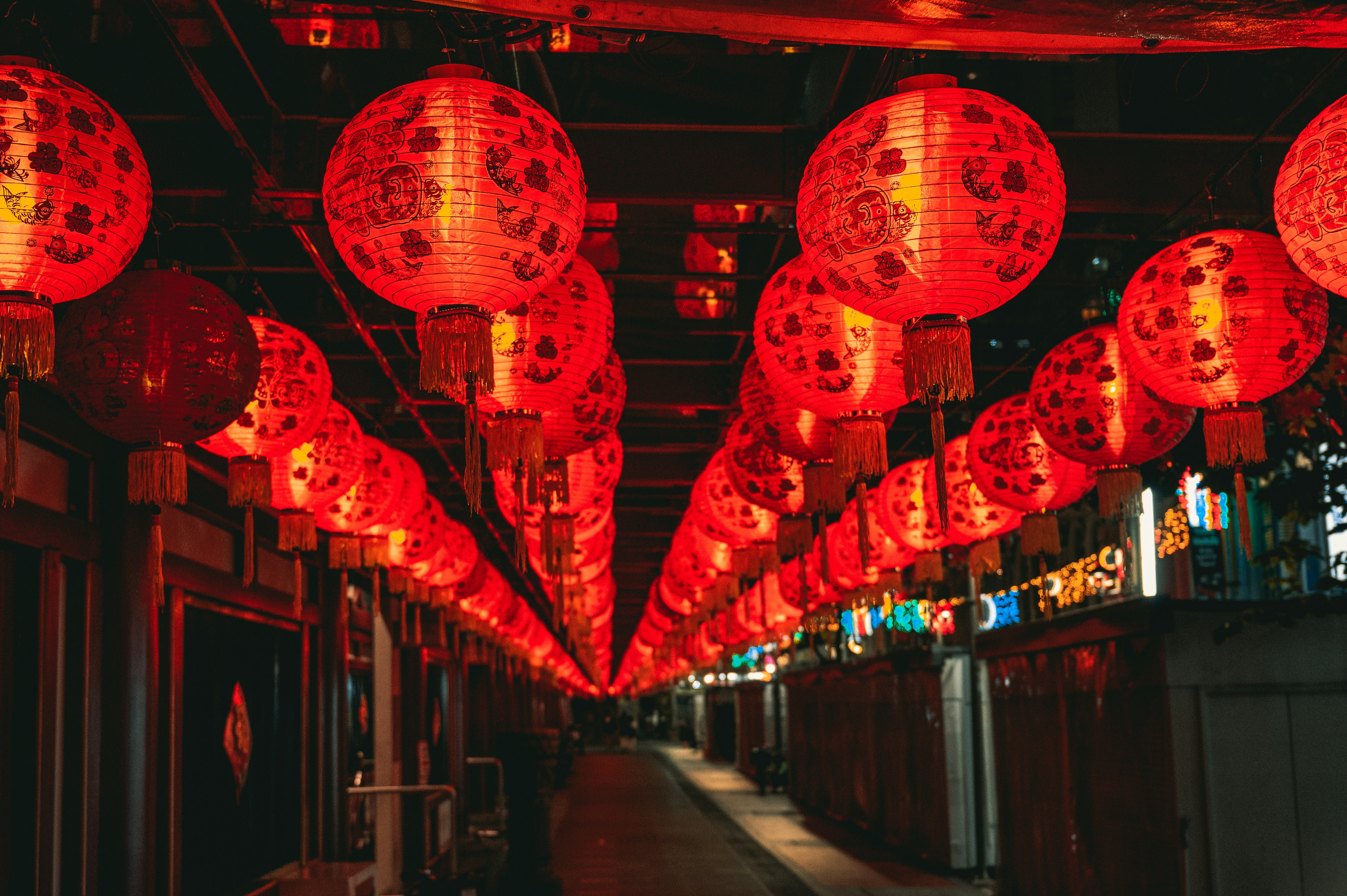
2021 Singapore Street Decorations (Photo: Jeyakumaran Mayooresan, unsplash.com)
Thailand
In Thailand, Chinese New Year is celebrated with great enthusiasm immediately before the New Year celebrations known as "Songkran." In areas with established Chinese communities in Thailand, traditional celebrations are held, featuring Chinese cuisine and street performances.

